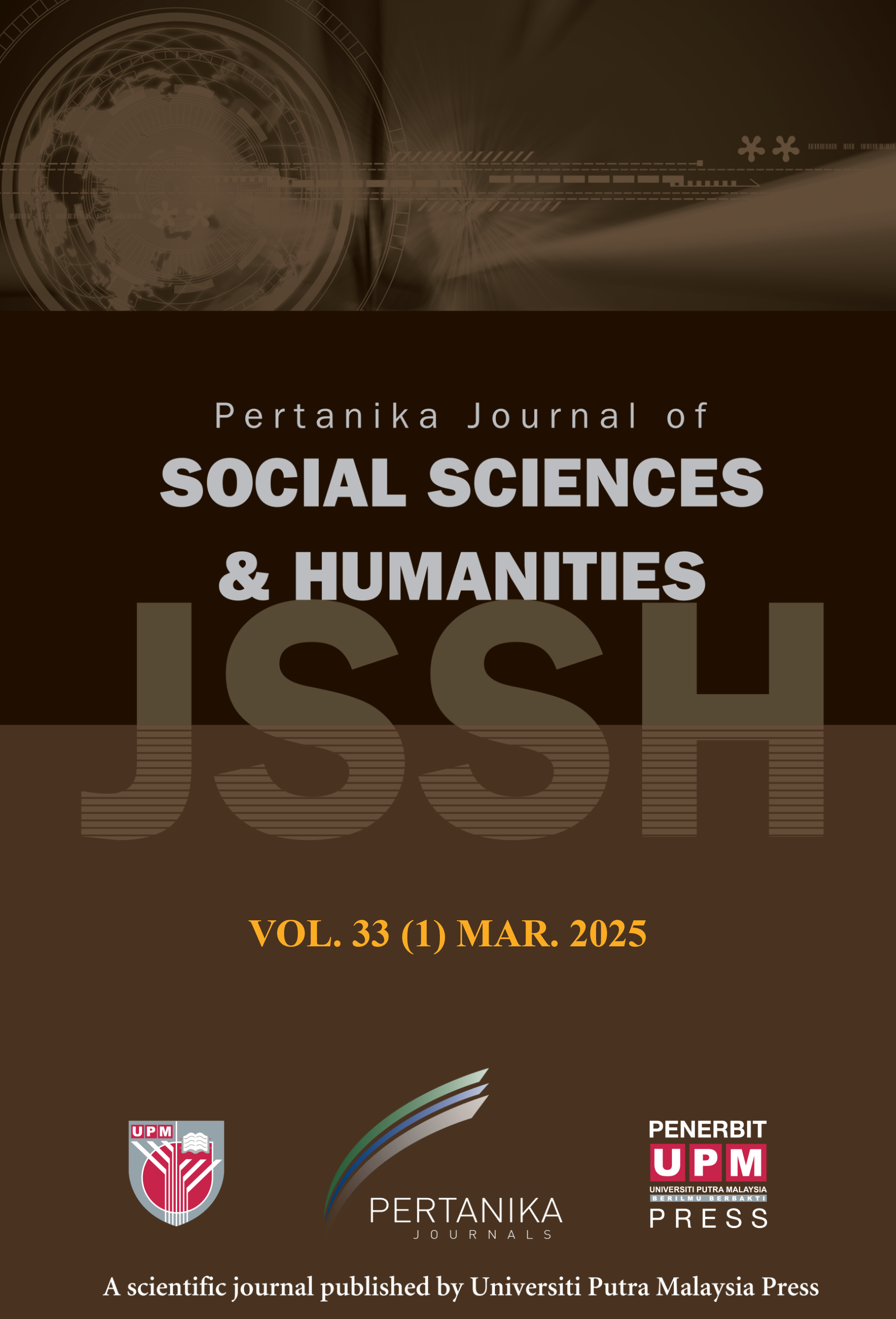PERTANIKA JOURNAL OF SOCIAL SCIENCES AND HUMANITIES
e-ISSN 2231-8534
ISSN 0128-7702
J
J
Pertanika Journal of Social Science and Humanities, Volume J, Issue J, January J
Keywords: J
Published on: J
J
-
Blanco, H., & Alberti, M. (2009). Hot, congested, crowded and diverse: emerging research agendas in planning. Progress in Planning, 71(4), 153-205. https: //doi.org/10.1016/j.progress.2009.03.001
-
Cervero, R., & Kockelman, K. (1997). Travel demand and the 3Ds: Density, diversity, and design. Transportation Research part D: Transport and Environment, 2(3), 199-219. https: //doi.org/10.1016/S1361-9209(97)00009-6
-
Chalermpong, S. (2007). Rail transit and residential land use in developing countries: Hedonic study of residential property prices in Bangkok, Thailand. Transportation Research Record, 2038(1), 111-119. https: //doi.org/10.3141/2038-15
-
Dixon, L. B. (1996). Bicycle and pedestrian level-of-service performance measures and standards for congestion management systems. Transportation Research Record, 1538(1), 1-9. https: //doi.org/10.1177/0361198196153800101
-
Duduta, N. (2013). Direct ridership models of bus rapid transit and metro systems in Mexico City. Transportation Research Board, 2394(1), 93-99. https: //doi.org/10.3141/2394-12
-
Fee, K., & Hartley, D. (2011). Urban growth and decline: The role of population density at the city core. Federal Reserve Bank of Cleveland.
-
Hu, J. H., Zhan, C. Z., Cheng, Z. F., & Wang, B. (2013). A research of pedestrian evacuation simulation for BRT station based on fine grid method. Procedia Engineering, 52, 137-144. https: //doi.org/10.1016/j.proeng.2013.02.118
-
ITDP. (2017). The BRT standard 2016. Institute for Transportation & Development Policy Indonesia.
-
Kim, C., Parent, O., & Hofe, R. V. (2018). The role of peer effects and the built environment on individual travel behavior. Environment and Planning B: Urban Analytics and City Science, 45(3), 452-469. https: //doi.org/10.1177/2399808317740354
-
Makarova, I., Pashkevich, A., Shubenkova, K., & Mukhametdinov, E. (2017). Ways to increase population mobility through the transition to sustainable transport. Procedia Engineering, 187, 756-762. https: //doi.org/10.1016/j.proeng.2017.04.434
-
Miranda-Morenoa, L. F., Morency, P., & El-Geneidy, A. M. (2011). The link between built environment, pedestrian activity and pedestrian–vehicle collision occurrence at signalized intersections. Accident Analysis and Prevention, 43(5), 1624-1634. https: //doi.org/10.1016/j.aap.2011.02.005
-
Monteiro, F. B., & Campos, V. B. G. (2012). A proposal of indicators for evaluation of the urban space for pedestrians and cyclists in access to mass transit station. Procedia - Social and Behavioral Sciences, 54, 637-645. https: //doi.org/10.1016/j.sbspro.2012.09.781
-
Munshi, T. (2016). Built environment and mode choice relationship for commute travel in the city of Rajkot, India. Transportation Research Part D, 44, 239-253. https: //doi.org/10.1016/j.trd.2015.12.005
-
Oktaviani, I., Dewi, D. I. K., & Rakhmatulloh, A. R. (2020). Can building density influence the amount of BRT trans Semarang ridership? In IOP Conference Series: Earth and Environmental Science (Vol. 409, No. 1, p. 012038). IOP Publishing. https: //doi.org/10.1088/1755-1315/409/1/012038
-
Özbil, A., Yeşiltepe, D., & Argin, G. (2015). Modeling walkability: The effects of street design, street-network configuration and land-use on pedestrian movement. Journal of the Faculty of Architecture, 12(3), 189-207.
-
Patankar, V. M., Kumar, R., & Tiwar, G. (2007). Impacts of bus rapid transit lanes on traffic and commuter mobility. Journal of Urban Planning and Development, 133(2), 99-106. https: //doi.org/10.1061/(ASCE)0733-9488(2007)133:2(99)
-
Purwanto, E., & Manullang, O. R. (2018). Evaluasi trotoar sebagai feeder non motorized untuk mendukung bus rapid transit (BRT) di Kota Semarang [Evaluation of sidewalk as a non motorized feeder to support bus rapid transit (BRT) in Semarang City ]. Jurnal Pembangunan Wilayah dan Kota, 14(1), 17-27. https: //doi.org/10.14710/pwk.v14i1.17336
-
SuaraMerdeka. (2015, October 09). Trans Semarang jadi percontohan [Trans Semarang Becomes Pilot ]. Suara Merdeka. Retrieved October 20, 2015, from https: //www.suaramerdeka.com/
-
Sung, H., Go, D., & Choi, C. G. (2013). Evidence of Jacobs’s street life in the great Seoul city: Identifying the association of physical environment with walking activity on streets. Cities, 35, 164-173. https: //doi.org/10.1016/j.cities.2013.07.010
-
Timmermans, H. (Ed.). (2009). Pedestrian behaviour: Models, data collection and application. Emerald Group Publishing Limited.
-
Townsend, C., & Zacharias, J. (2010). Built environment and pedestrian behavior at rail rapid transit stations in Bangkok. Transportation, 37(2), 317-330. https: //doi.org/10.1007/s11116-009-9226-8
-
Untermann, R. K., & Lynn, L. (1984). Accommodating the pedestrian: Adapting towns and neighborhoods for walking and bicycling. Van Nostrand Reinhold.
-
Yang, C., & Yao, M. (2019). Ultra-high intensity redevelopment of the core area of Japanese rail transit hub station. International Journal of Sustainability and Planning, 14(3), 245-259. https: //doi.org/10.2495/SDP-V14-N3-245-259
-
Zhang, Y., Ding, C., & Huang, L. (2016). the built environment and the frequency of cycling trips by Urban elderly: Insights from Zhongshan, China. Journal of Asian Architecture and Building Engineering, 15(3), 511-518. http: //doi.org/10.3130/jaabe.15.511
-
Zhao, C., Nielsen, T. A. S., Olafsson, A. S., Carstensen, T. A., & Meng, X. (2018). Urban form, demographic and socio-economic correlates of walking, cycling, and e-biking: Evidence from eight neighborhoods in Beijing. Transport Policy, 64, 102-112. https: //doi.org/10.1016/j.tranpol.2018.01.018
ISSN 0128-7702
e-ISSN 2231-8534
Recent Articles




